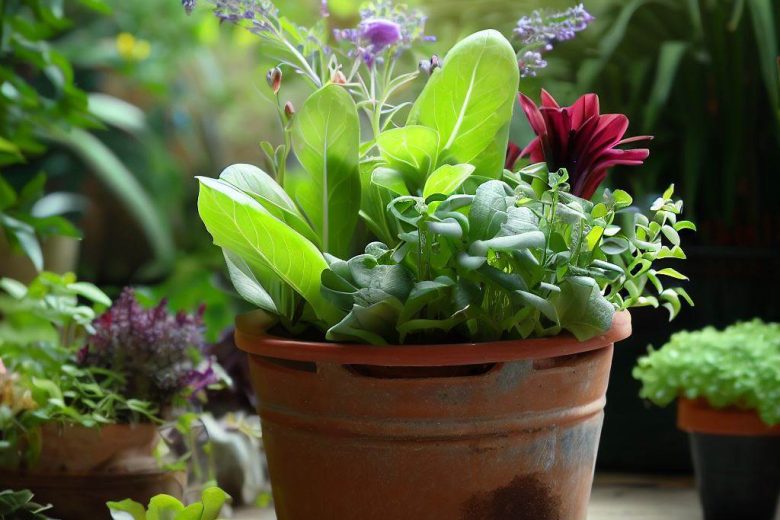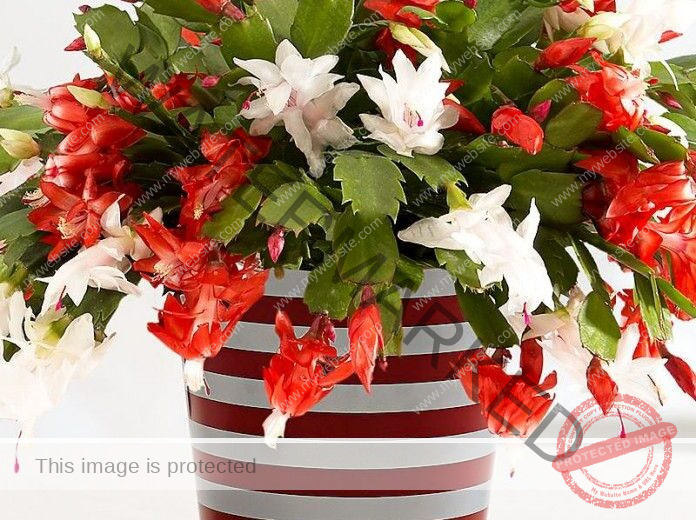Gardening enthusiasts and those seeking quick results often find themselves intrigued by the prospect of plants that grow at an accelerated pace. While many plants require months or even years to reach maturity, there are several remarkable species that can go from seed to sprout in as little as two weeks.
These rapid-growing plants offer a unique opportunity to witness the magic of nature’s growth process within a short span of time. Whether you’re a novice gardener or a seasoned pro, experimenting with these fast growers can be both educational and rewarding.
25 Vegetables & Plants That Grow In 2 Weeks-15 Weeks

1. Cress
Cress seeds are known for their incredibly swift germination, often sprouting in just a matter of days. These peppery greens are ideal for salads and garnishes.
Read Also: 30 Fastest Vegetables To Grow Indoors
2. Radishes
Radishes are famous for their rapid growth. In about two weeks, you can witness the transformation from seed to a small, crisp root vegetable.
3. Sunflowers (Dwarf Varieties)
While giant sunflowers may take longer to mature, dwarf sunflowers can surprise you with their quick growth, adding a burst of sunshine to your garden.
Read Also: [Beginner’s Guide] How To Grow Vegetable Indoors With Light
4. Mustard Greens
Mustard greens are not only delicious but also speedy growers. Their tender leaves are ready for harvest in just a couple of weeks.
5. Arugula
Arugula is a popular salad green that can be grown from seed to harvestable leaves in around two weeks, providing a spicy kick to your culinary creations.
Read Also: 20 Easiest Herbs To Grow Indoors [Beginner’s Guide]
6. Lettuce (Baby Leaf Varieties)
Baby leaf lettuce varieties, like mesclun mixes, are perfect for quick harvests. They are ready to be picked in a matter of weeks.
7. Spinach (Baby Leaf Varieties)
Similar to lettuce, baby leaf spinach can be harvested early, offering tender and nutrient-rich leaves for your meals.
8. Microgreens
Microgreens encompass a variety of young, edible plants harvested shortly after germination. These tiny greens are packed with flavor and nutrients.
Read Also: 25 Best Indoor Vegetable Garden System
9. Basil
While basil plants may not fully mature in two weeks, you can definitely enjoy the first leaves for culinary use within this timeframe.
10. Chia Plants
Chia seeds sprout quickly and can grow into attractive, green plants within a short period, adding an interesting texture to your garden.
11. Green Onions
Green onions, or scallions, can be regrown from kitchen scraps. They grow fast and can be used as garnishes or in cooking.
Read Also: Top 50 Fast Growing Fruits In Pots
12. Bok Choy (Baby Bok Choy)
Baby bok choy is a Chinese cabbage variety that can reach a harvestable size in as little as two weeks.
13. Kale (Baby Leaf Varieties)
Baby kale leaves are tender and delicious, and they can be ready for harvest in about two weeks.
14. Pea Shoots
Pea shoots are the young, tender vines of pea plants. They sprout quickly and can be used in salads, sandwiches, and stir-fries.
15. Cilantro
Cilantro is a flavorful herb that grows rapidly. While it may not reach full maturity in two weeks, you can start harvesting its leaves for seasoning.
16. Dill
Similar to cilantro, dill can be harvested for its aromatic leaves within a short timeframe.
17. Fenugreek
Fenugreek leaves are used in various cuisines and can be ready for harvest in around two weeks.
18. Turnip Greens
Turnip greens are not only nutritious but also fast-growing. You can harvest their tender leaves early for salads or cooking.
19. Beets (Baby Beet Greens)
While baby beet greens won’t yield full-grown beets, you can still enjoy their flavorful leaves in salads and dishes.
20. Swiss Chard (Baby Leaf Varieties)
Baby Swiss chard leaves are colorful and vibrant, and they can be ready to harvest in a short period.
21. Amaranth
Amaranth leaves are not only quick to grow but also highly nutritious, making them a valuable addition to your garden.
22. Mizuna
Mizuna is a Japanese green that grows rapidly and adds a peppery flavor to salads and dishes.
23. Tatsoi
Tatsoi, another Asian green, forms small rosettes that are ready for harvest within two weeks.
24. Pak Choi
Pak choi, also known as bok choy, can be harvested young for tender and succulent stems.
25. Sorrel
Sorrel leaves have a tangy flavor and can be harvested early for a zesty addition to your meals.
Vegetables That Grow in 2 Weeks
When it comes to quickly enjoying the fruits of your gardening labor, there are several vegetables that can go from seed to plate in just two weeks. These rapid growers are perfect for gardeners seeking instant gratification or those with limited time. Let’s explore some of the vegetables that can be ready for harvest within this short timeframe:
Cress:
Cress seeds germinate rapidly, and you can start snipping the flavorful leaves for salads in around two weeks.
Radishes:
Radishes are renowned for their speedy growth. Within two weeks, you can witness the transformation from seeds to crunchy, vibrant roots.
Mustard Greens:
Mustard greens, with their peppery flavor, can be harvested for your dishes within two weeks of sowing.
Arugula:
This tangy salad green adds a punch of flavor to your meals and can be ready to harvest in just two weeks.
Lettuce (Baby Leaf Varieties):
Varieties like mesclun mixes offer tender baby leaves for salads in a matter of weeks.
Spinach (Baby Leaf Varieties):
Similarly, baby spinach leaves can be harvested for their nutritional value and delicate taste within a short period.
Bok Choy (Baby Bok Choy):
This Chinese cabbage variety can reach a harvestable size within two weeks, perfect for stir-fries and dishes.
Kale (Baby Leaf Varieties):
Baby kale leaves are tender and can be ready for harvest in about two weeks.
Pea Shoots:
These delicate shoots from pea plants can be used in various culinary creations within a few weeks.
Microgreens:
A wide range of microgreens, from radishes to sunflowers, can be grown to maturity within two weeks, offering intense flavors and vivid colors to your dishes.
3 Months Crops
For those who can wait a bit longer but still desire relatively fast results, there are crops that mature in around three months. These crops strike a balance between quick harvests and more extended growth periods. Some examples include:
Carrots:
Depending on the variety, carrots can be ready for harvest in approximately three months, rewarding you with crisp and sweet roots.
Beets:
While baby beet greens can be harvested earlier, mature beet roots are usually ready within three months.
Potatoes:
Early varieties of potatoes can be harvested within three months after planting, offering a rewarding yield.
Turnips:
Turnips can be harvested for both their roots and greens within a three-month period.
How Fast Do Marigolds Grow?
Marigolds are known for their rapid growth and vibrant blooms, making them a popular choice for many gardeners. From the moment you sow marigold seeds, you can expect to see the following growth stages:
Germination: Marigold seeds usually germinate within 4 to 14 days after planting, depending on the specific variety and environmental conditions.
Seedlings: Within two weeks of germination, marigold seedlings will typically have developed their first
set of true leaves.
Blooms: Depending on the variety, marigolds can start producing blooms around 6 to 8 weeks after sowing. These blooms continue to develop and provide a burst of color to your garden.
Marigolds are one of the faster-growing flowering plants, making them an excellent choice for those seeking quick results and a lively garden display.
Fast-Growing Plants for Science Projects
Engaging in science projects often requires plants that exhibit rapid growth, allowing students and enthusiasts to observe various stages of the plant life cycle within a limited timeframe. Here are a few plant options that are well-suited for science projects:
Fast-Growing Beans: Beans, such as mung beans or lima beans, are ideal for science experiments due to their rapid germination and growth. Students can observe the growth of roots, stems, and leaves within a short period.
Radishes: Radishes are known for their quick growth and are excellent for studying seed germination, root development, and flowering.
Fast-Growing Herbs: Herbs like basil and cilantro germinate relatively quickly and offer opportunities to observe growth patterns, leaf development, and aromatic qualities.
How Fast Do Beans Grow?
Beans are among the fastest-growing plants, making them a popular choice for both gardeners and educational purposes. The growth timeline of beans can be broken down as follows:
Germination: Bean seeds typically germinate within 7 to 10 days after planting, depending on factors like temperature and soil conditions.
Seedlings: Within two weeks of germination, bean seedlings will emerge from the soil, showcasing their cotyledons (seed leaves).
Vining Growth: Depending on the bean variety, vining growth and the development of true leaves will become noticeable around 2 to 3 weeks after germination.
Flowering and Pod Formation: Bean plants often start producing flowers around 6 to 8 weeks after planting. These flowers give way to bean pods, which grow and mature over the subsequent weeks.
Harvest: The time to harvest beans depends on the specific type (e.g., snap beans, green beans). Generally, beans are ready to be harvested around 8 to 12 weeks after planting, from the germination stage.
How Fast Do Zinnias Grow?
Zinnias are beloved annual flowers known for their vibrant colors and quick growth. The growth stages of zinnias typically unfold as follows:
Germination: Zinnia seeds usually germinate within 7 to 10 days after planting, under optimal conditions.
Seedlings: Within two weeks of germination, zinnia seedlings will emerge, showcasing their first true leaves.
Bud Formation: Zinnias start producing flower buds around 4 to 6 weeks after germination.
Blooms: Depending on the variety, zinnias will begin blooming around 8 to 10 weeks after planting. Once they start flowering, zinnias can continue to produce blooms throughout the growing season.
Continued Blooming: Deadheading (removing spent flowers) can encourage zinnias to continue blooming, prolonging their colorful display.
Conclusion
Gardening is a rewarding endeavor, and the joy of witnessing plants grow from seed to maturity is truly magical. For those who are impatient or simply curious about the growth process, these 25 rapid-growing plants offer an opportunity to experience nature’s wonders within a mere two weeks. Whether you’re looking to enhance your culinary creations or just want to enjoy the beauty of fast-growing greenery, these plants are a testament to nature’s incredible ability to thrive in even the shortest timeframes.





Would like to do corn hydroponics.
What’s your advice on this?
It’s nice but i’ll advice you start with pepper and tomatoes before you advance into that.